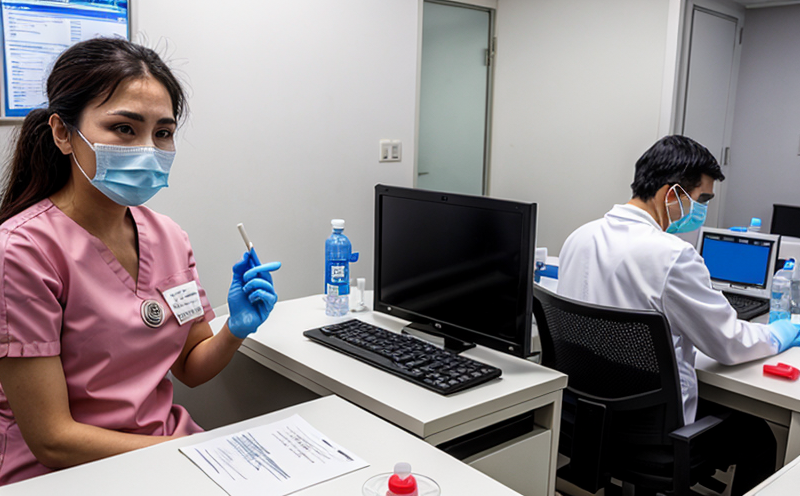Hantavirus Detection in Rodent Reservoirs
The detection of hantaviruses in rodent reservoirs is crucial for preventing infectious disease outbreaks. Hantaviruses are a group of viruses that can cause serious illnesses, including Hantavirus Pulmonary Syndrome (HPS). These pathogens reside primarily in the kidneys and lungs of infected rodents and are shed through their urine, feces, and saliva.
Identifying hantavirus presence early is essential for public health measures to control rodent populations and prevent human exposure. Laboratories play a vital role in this process by offering accurate and reliable detection methods that align with international standards and best practices.
The testing process involves several stages: collecting samples, processing the specimens, performing serological or molecular tests, interpreting results, and reporting findings. The selection of appropriate techniques ensures compliance with relevant standards such as ISO 15189 for medical laboratories and ASTM E2307-14 for laboratory quality management systems.
Sample collection typically involves trapping rodents in specific locations where they are known to reside or frequent. Traps must be set up following standard protocols, which vary depending on the type of rodent (e.g., deer mice) and environmental conditions. After capture, proper handling procedures ensure minimal contamination while transferring samples for testing.
Once collected, specimens undergo rigorous processing steps that may include washing to remove external contaminants, homogenizing tissues if necessary, and preparing aliquots suitable for either serological or molecular analysis. Serological tests detect antibodies against hantavirus antigens using enzyme-linked immunosorbent assays (ELISAs), while molecular techniques like reverse transcription polymerase chain reaction (RT-PCR) amplify viral RNA from collected samples.
Interpreting results requires careful consideration of various factors including sample quality, assay sensitivity and specificity, as well as potential cross-reactivity issues. Reporting must follow established guidelines set forth by regulatory bodies like the Centers for Disease Control and Prevention (CDC).
In summary, detecting hantavirus in rodent reservoirs is an intricate procedure requiring expertise across multiple disciplines. By adhering to stringent protocols and utilizing advanced technologies, laboratories can contribute significantly towards safeguarding public health.
Applied Standards
| Standard | Description |
|---|---|
| ISO 15189: Medical Laboratories – Quality and Competence Requirements for the Competence of Medical Laboratories | This international standard outlines essential criteria for ensuring high-quality medical laboratory services, including those involved in hantavirus detection. |
| ASTM E2307-14: Standard Practice for Establishing a Quality Management System for Laboratory Quality and Competence Requirements | An American Society for Testing and Materials standard providing guidance on implementing effective quality management systems within laboratories engaged in diagnostic testing. |
| CDC Guidelines for Hantavirus Surveillance | Centers for Disease Control guidelines aimed at standardizing methods used during hantavirus surveillance activities. |
Benefits
Detecting hantaviruses in rodent reservoirs offers numerous benefits, particularly in preventing disease transmission to humans. Early detection allows for targeted interventions such as rodenticide application or habitat modification, reducing the risk of zoonotic spillover events.
By identifying areas with high prevalence rates of infected rodents, public health officials can implement preventive measures more effectively than relying solely on reactive strategies once an outbreak has begun. This proactive approach helps minimize healthcare costs associated with treating hantavirus infections and reduces mortality rates among affected individuals.
Laboratory-certified detection services also enhance overall accuracy by providing consistent results across different regions, ensuring that resource allocation is based on reliable data rather than anecdotal evidence or assumptions. Additionally, these certified laboratories contribute to global health security efforts by contributing accurate information for epidemiological studies and vaccine development initiatives.
Use Cases and Application Examples
- Public Health Surveillance Programs: Collaborating with local authorities to monitor rodent populations in high-risk areas, such as rural communities or urban centers with significant outdoor activity.
- Hospital Preparedness Planning: Assisting healthcare facilities in preparing for potential outbreaks by providing baseline data on hantavirus prevalence within their catchment regions.
- Research Institutions: Supporting academic institutions conducting studies aimed at understanding the ecology of hantaviruses and developing new diagnostic tools or treatments.
- Retail Chains & Food Service Establishments: Advising businesses operating in environments that attract wild animals on implementing rodent control programs to protect against contamination risks.





